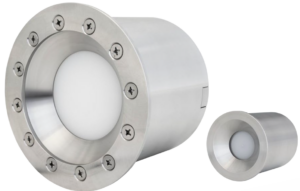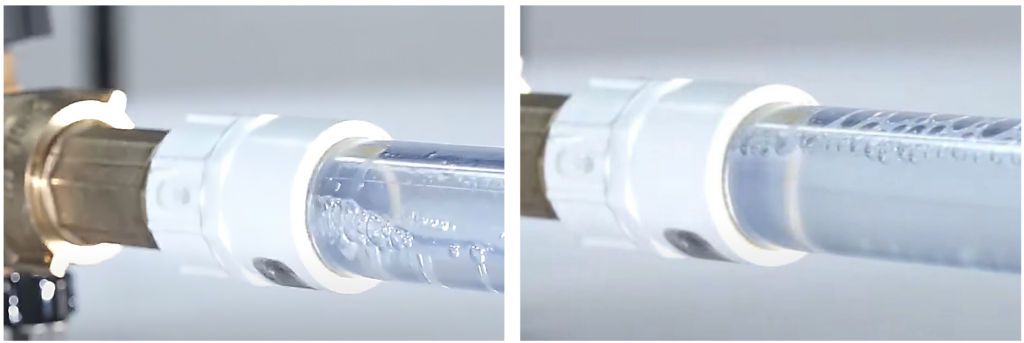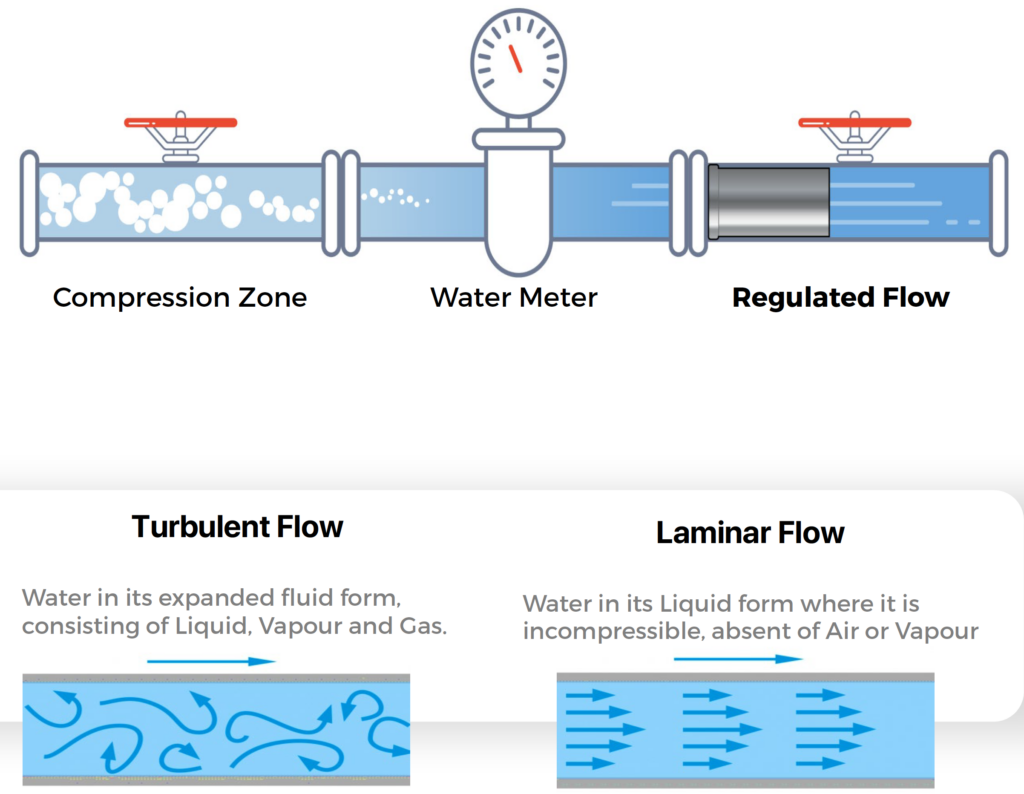
The average U.S. building over 200,000 square feet consumed 7.9 million gallons of water (about 30,000 m3) in 2012 (Energy Information Agency). A Watergater flow control valve could save this average building $15,000, annually.
In most commercial and industrial buildings, water supplied by your local municipality has air in it, caused by turbulence. And building operators are paying for this air on their water bill.
In this blog, we’ll introduce the innovative, patented Watergater flow control valve. We’ll explain how the Watergater valve eliminates the air flowing through the meter, reducing metered-water consumption and saving building operators money – up to 25%.
What is the Watergater flow control valve?
The Watergater valve is a flow management device made from stainless steel material. It is installed on the building side of the meter (in line with your current water line). By regulating the flow of water through the meter, the Watergater valve can reduce the volume of air being measured at the meter by up to 25%.

The Watergater valve is viable and installed anywhere with a utility water meter that is measuring consumption with 45 PSI or greater. The valves are built for water supply lines ranging from ¾” to 16” in diameter.
How does the Watergater Valve Work?
For context, this is what your building’s water line looks like. Note the air bubbles included in the line.

And water meters aren’t very smart – they can’t tell if it’s air or water flowing through the meter. This means a building’s water meter measures the volume of both the water AND air! So, ten liters measured may only be eight liters of water. Building operators are paying for air!
The Watergater valve fixes this. The patented design of the valve regulates the water’s flow in a manner that eliminates the air passing through a building’s water meter. Technically, the valve is calming the turbulent water flow (see the compression zone in the image below) and creating a laminar water flow (regulated flow) as it passes by the meter.
In the image, it can be seen on the right that the Watergater valve (grey device) is regulating the water flow upstream of the water meter, reducing the amount of turbulent water passing through the meter.

What are the Watergater’s Benefits?
With a Watergater valve, building operators will only pay for the water used, not the air. The Watergater valve can reduce a building’s water bills up to 25%.
How much does it cost?
The cost of the Watergater valve and its installation will vary depending on the size of the valve needed and the water meter’s access points. The Watergater usually pays itself off in one to four years, depending on how much water is used by the building.
There is a cost to delaying action – those air bubbles are continuously adding to the building’s water bill, every day.
Curious if the Watergater is right for your building?